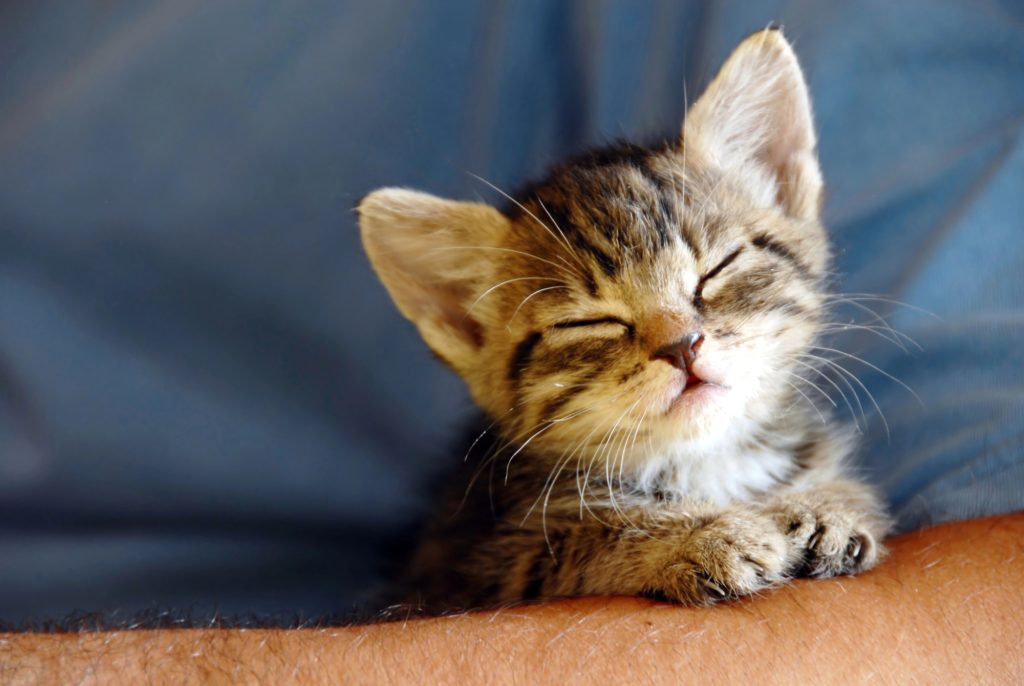Table of Contents
Cleaning your cat’s ears is an essential part of their grooming routine. While cats are generally good at keeping themselves clean, the ears can be a tricky spot that requires a bit of extra attention. Regular ear cleanings help prevent ear issues, including ear infections in cats, which can be painful and lead to more severe health problems if left untreated.
As a pet owner, it’s important to recognize when your cat’s ears need to be cleaned. By learning the proper techniques for cleaning cat ears, you can ensure that excess wax and debris are gently wiped away, keeping your feline friend comfortable and healthy. Step-by-step instructions will guide you through how to clean your cat’s ears safely and effectively.
Why You Should Clean Your Cat’s Ears
Cleaning your cat’s ears is necessary for maintaining their overall health. Ear wax, if not managed, can build up and cause discomfort or contribute to infections. By regularly checking and cleaning your cat’s ears, you can catch any potential problems early on, reducing the risk of complications that could require veterinary intervention.
Moreover, keeping your cat’s ears clean will help you spot any unusual changes quickly. Whether it’s an unusual amount of wax buildup or signs of an ear mite infestation, you’ll be better prepared to take appropriate action to ensure your cat’s well-being.
Signs That It Is Time to Clean Your Cat’s Ears
Knowing when to clean your cat’s ears is key to preventing ear issues. Keep an eye out for signs like a foul odor, visible dirt, or your cat shaking their head more than usual—all indicators that it’s time for an ear cleaning.
Foul Odor
A foul odor emanating from your cat’s ears is a telltale sign of an underlying issue. This unpleasant smell can signal an ear infection or a buildup of bacteria and yeast. If you detect a bad odor, it’s important to clean the ears and monitor for other symptoms that might warrant a visit to the vet.
Visible Dirt or Debris
When you spot visible dirt or debris in your cat’s ears, it’s a clear indication that they need cleaning. Accumulated dirt not only causes discomfort but can also contribute to ear issues, including infections. A gentle cleaning can remove this buildup and keep your cat’s ears in good condition.
Frequent Head Shaking or Scratching
If your cat shakes their head frequently or scratches their ears often, it could be a sign of discomfort. These behaviors are common indications of ear problems, which might include infections or the presence of foreign bodies in the ear canal. It’s important to address these signs promptly to prevent further discomfort or damage to the ear.

Preparing for the Ear Cleaning Process
Before you begin, gather all necessary supplies and understand the steps to safely clean your cat’s ears. Create a calm environment, and have a strategy for gently massaging the ear to push debris out without causing distress. Consult your veterinarian if you have concerns or if this is your cat’s first ear cleaning.
Essential Supplies for Safely Cleaning Your Cat’s Ears
To safely clean their ears, you’ll need a few key supplies such as a vet-recommended ear cleaning solution, cotton balls, and perhaps cotton swabs for the outer ear folds. Avoid inserting anything into your cat’s ear canal, as this can push debris further in and cause injury.
What You Should Never Use Inside a Cat’s Ears
Never use harmful or irritating substances like alcohol or hydrogen peroxide in your cat’s ears, as these can cause pain and inflammation. Additionally, avoid using cotton swabs deep inside the ear canal, as this can lead to injury or worsen any existing conditions.
Creating a Calm Environment Before You Begin
Creating a calm environment is crucial when preparing to clean your cat’s ears. Choose a quiet space, and consider enlisting the help of a family member or professional groomer if your cat is particularly nervous or uncooperative. A relaxed setting will make the cleaning process easier for both you and your cat.
Step-By-Step Ear Cleaning Techniques
When it’s time to clean your cat’s ears, follow the step-by-step techniques outlined below.
1. Gently Inspect Your Cat’s Ears
Start by gently inspecting your cat’s ears to assess the level of cleaning needed. Look for any signs of redness, swelling, or discharge. Regular inspection is a key part of grooming your cat and will help you determine whether a full cleaning is necessary or if a simple wipe will suffice.
2. Soothing Your Cat for the Cleaning Session
As a cat parent, you know how important it is to keep your furry friend calm and comfortable. Before starting the cleaning session, pet your cat gently and speak in a soothing voice to help them relax. Ensure that they’re in a comfortable position and reward them with treats and affection to create a positive association with ear cleaning.
3. Proper Application of Ear Cleaning Solutions
When applying ear cleaning solutions, follow the product’s instructions carefully. Gently squeeze the recommended amount into the ear canal, and then massage the base of the ear to help break up any wax or debris. After massaging, let your cat shake their head to bring the softened material to the outer ear for easy removal.
4. Massaging the Base of the Ear for Effective Cleaning
Once you have applied a vet-approved ear-cleaning solution, it’s important to massage the base of your cat’s ear gently. This helps the solution work into the nooks and crannies, loosening any debris and wax. Place your fingers at the base of the ear flap and gently rub in a circular motion. You should hear a squishing sound, which indicates that the solution is mixing with the buildup inside the ear canal.
5. Wiping Away Debris and Excess Solution Gently
Following the massage, soak a cotton ball with the cleaning solution and use it to wipe the inside of the ear flap and the accessible areas of the ear canal. It’s crucial to never insert cotton swabs into the ear canal, as they can push debris further in or damage the sensitive inner structures. Instead, wrap your finger with a clean towel and gently remove any visible dirt or wax.
6. Allowing Your Cat to ShakeOut Remaining Fluid
After you’ve done your part in cleaning, allow your cat to naturally shake out any remaining fluid. This is an instinctive response that helps clear the ear canals of excess solution and dislodged debris. Be prepared, as this can be a bit messy, and have a clean towel handy to protect surrounding surfaces and gently dab any moisture from the ear flaps.

Post-Cleaning Care and Observation
Once the cleaning process is complete, keep an eye out for any health concerns. Monitoring your cat for signs of ear issues is an important step to ensure proper healing and to catch any potential complications early.
What to Do if Your Cat Exhibits Stress or Pain After Cleaning
If your cat shows signs of stress or pain following an ear cleaning, a cat parent needs to respond with care. Offer a quiet space for your cat to recover and observe for any ongoing signs of discomfort. If the stress or pain persists, consult with your veterinarian to rule out any underlying issues or injuries that may have occurred during the cleaning.
Monitoring Your Cat for Signs of Ear Infection or Mites
Regular wellness checks of your cat’s ears are vital for spotting tiny brown specks or symptoms of ear issues, which could indicate ear mites in cats. While dogs are also susceptible to ear mites, cats are particularly prone to these parasites. Keep a lookout for excessive scratching or head shaking, and seek veterinary advice if you suspect an infection or infestation.
Tips for Maintaining Ear Health Between Cleanings
To maintain your cat’s ear health, ensure a balanced diet and consistent grooming routine. Regularly check the ears for foul odors or an unusual amount of wax buildup, which can be early signs of infection. Additionally, minimize exposure to outdoor irritants and keep your home environment clean to reduce the risk of ear problems.
Should you notice any irregularities or changes in your cat’s ear health, do not hesitate to contact your veterinarian. Frequent inspections and prompt attention to any concerns can prevent minor issues from developing into serious infections or diseases that could impact your cat’s overall wellness.
When to Seek Veterinary Care for Your Cat’s Ears
It’s crucial to seek veterinary care if you notice any signs of infection, such as redness, swelling, or discharge, or if your cat is in distress. Additionally, if you’re unsure about the cleaning process or if your cat has a history of ear problems, professional guidance can provide both safety and peace of mind.
Regular veterinary check-ups will also help catch any ear issues early and can provide an opportunity for your vet to teach you safe and effective ear-cleaning techniques tailored to your cat’s specific needs.

Frequently Asked Questions
1. Can I use oil to clean cats’ ears?
Certain oils can be used to clean a cat’s ears, but it’s imperative to consult with your veterinarian for a recommendation. After applying the oil as directed, use a clean towel to wipe away any excess debris. Regular use of the right type of oil can help maintain your cat’s ear health.
2. Can I use baby wipes to clean my cat’s ears?
While baby wipes are gentle, they are not recommended for cleaning a cat’s ears. They may not effectively remove debris and could leave excess solution behind, potentially irritating. Instead, use products specifically designed for cats, and reward your cat after the grooming routine to make the experience positive.
3. What is the best ear cleaner for cats?
The best ear cleaner for your cat will be one that is specifically formulated for feline ear health. Look for cleaners that are non-irritating, designed to remove debris and wax, and that support the natural balance of your cat’s ears. Your vet can suggest a cleaner that is suitable for your cat’s particular needs.
Wrapping up Your Cat’s Ear Cleaning Routine
Once you’ve completed cleaning your cat’s ears, it’s important to ensure that the experience ends on a positive note for your feline friend. Offer them their favorite treat and spend some time cuddling or playing to associate ear cleaning with a pleasant outcome. This can help make future cleanings easier for both of you. Remember, maintaining a consistent ear cleaning routine can prevent a host of health issues and contribute to the overall well-being of your cat.

Hi, I’m Zoey, a devoted mom to two charming Siamese cats. My passion lies in assisting fellow pet owners in providing optimal care for their cats. On CatsEuphoria, I share practical tips and relatable stories, inviting you to join me in appreciating the authentic bond between humans and our beloved feline companions.




